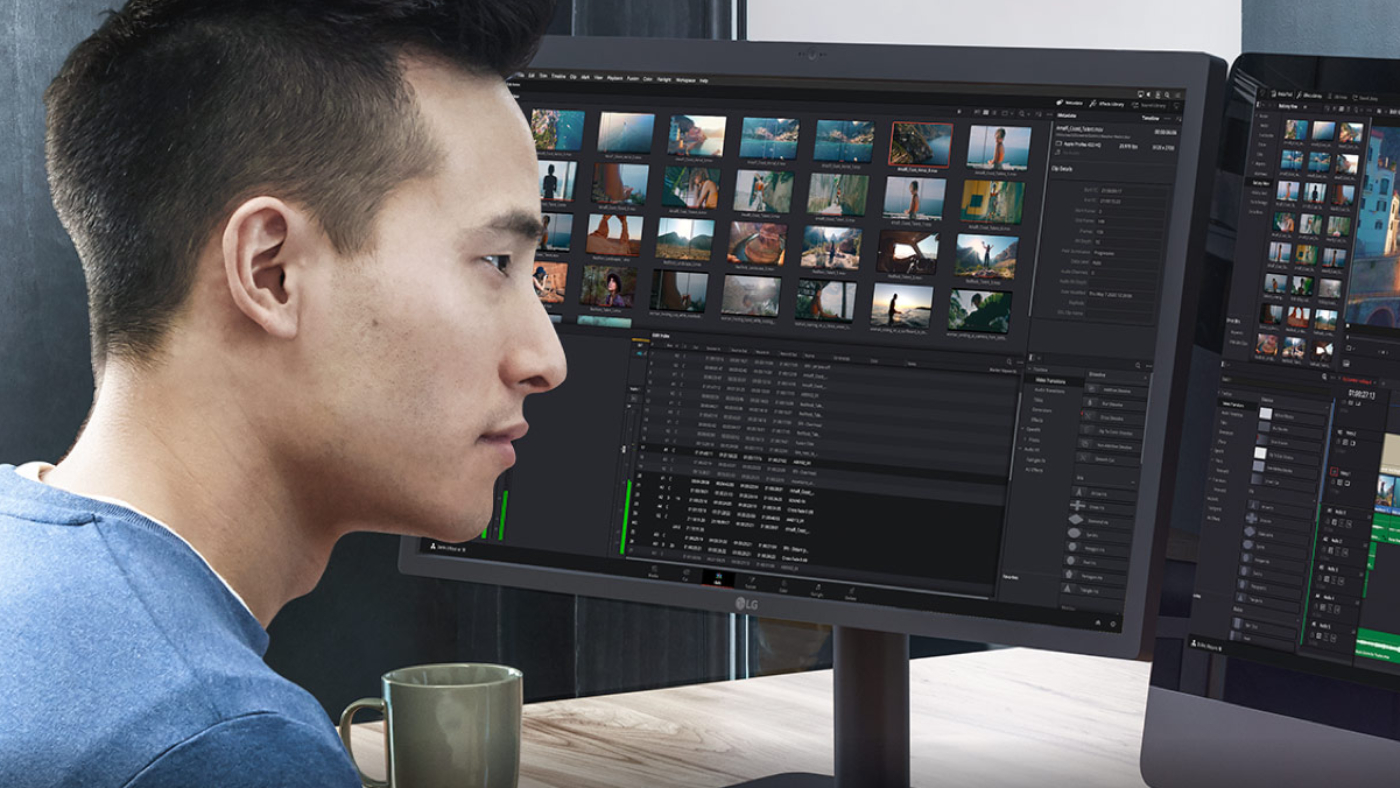In a nutshell
- Filmmakers can leverage a variety of free software to manage all aspects of film production.
- Establishing an online presence through platforms such as YouTube, Vimeo, Instagram, TikTok and personal websites created via tools like Wix is crucial for increasing visibility and reach.
- Utilizing networking platforms such as LinkedIn and Twitter provides filmmakers with opportunities for industry engagement, collaboration and staying up to date with industry trends.
New filmmakers often have questions: How can I get my projects noticed by the right people? How can I stand out among other filmmakers putting out their own work? While there are multiple ways to answer these questions, this article will focus on one main method: software. In the past, many filmmakers (including myself, the author of this article) wondered how to transition their ideas from paper to screen without access to necessary tools for editing, visual effects and so forth. Well, today, that problem is a distant memory. So sit tight; we’ll show you the many free software and tools available to you to get your videos noticed.
Free software for writing and planning your film
Every film begins with an idea. But before it can become a film, that idea needs to be turned into a script. Theoretically, you can use any writing tool for scriptwriting. But if you want to learn how to format a script properly, then you’d best use an actual scriptwriting tool. Luckily there are many options to help you do this. While professional, costly programs like Final Draft are available, excellent free options such as Arc Studio exist.
Arc Studio is a great free tool for writing a script that allows you to professionally format your screenplay, color code it and arrange it in a way that best communicates your story. Although Arc Studio offers a paid service, you receive two free projects. This is incredibly useful if you’re new to filmmaking and want to focus on one project at a time. There’s a Windows and a Mac app and a browser version, allowing you to write your script from anywhere.
Once your script is ready, the next step is planning your project. A great tool for this purpose is Milanote, an intuitive organizational tool that allows you to visualize your ideas on boards. Milanote offers various templates for different projects, from books to film and TV, including storyboard templates, character pages and mood boards. You can import external notes, images and links to further enhance your project, and once your visualization is complete, you can export your board as a PDF to share with collaborators.
Free production software
Now that you have a vision your project, it’s time to film. But let’s say you don’t have a professional film camera; then what? There are several apps out there that are made specifically for filming or assisting with filming to help you get the shots you want. One such app is the Protake Mobile Cinema Camera. This free-to-download app is similar to professional film apps like Filmic Pro, offering you full control over your focal range, exposure and contrast. It even allows you to hardbake a color profile or LUT while filming. It’s an incredibly versatile app and will be the perfect tool to capture high-quality professional content on a lower budget.
Additionally, Protake offers two modes: auto and pro. The auto mode allows you to use your phone more freely, letting the app manage aspects like auto-focusing, lighting and applying color profiles to achieve your desired look. In contrast, the pro mode grants you greater control over your shots, enabling you to set your own focal range, exposure, etc.
One exceptional feature is Protake’s Wi-Fi monitor, which broadcasts the image from your phone to up to two devices, letting you see what’s being filmed from a remote location. Say you have a friend who is great at filming, but you still want to see everything as it’s being filmed. With Wi-Fi monitoring, you can view your friend’s recording on your device.
Free software for video editing

There are several different programs that filmmakers and content creators prefer for post-production editing. If you’re looking for a powerful yet cost-friendly solution, consider DaVinci Resolve from Blackmagic Design. Many large productions, like Disney and Marvel, use this software to cut high-end productions. Now, this may lead you to believe it’s an expensive program. While Blackmagic Design does offer a paid version of Resolve, the base version of Resolve is completely free. You can assemble multilayer tracks for both audio and video, color grade and correct your footage and export and conform your edits for various online platforms. The user interface is neat and straightforward. You set up a project and begin editing immediately.
One thing that definitely helps you get noticed in today’s world of content creation is the “look” of what you put out. Many people will base their opinions on content depending on how it looks, which is where color grading comes in. Color grading is the art of adjusting the colors, exposure, contrast and other factors that play into the feeling and style of a film. Depending on the setting of your shots or scenes, the grade will change to represent them. This is where DaVinci Resolve really shines. No other free editing applications come close to Resolve in the color grading department.
What about visual effects?

A major factor that plays a significant role in getting new filmmakers noticed online is how they use visual effects. Today, visual effects tools have not only drastically improved over the years but have also become much more affordable and, in some cases, free.
Look no further than Blackmagic Design’s remarkable visual effects tool, Fusion. It operates with a node structure similar to Nuke — the standard compositing tool for large visual effects vendors. However, Fusion features a simpler user interface and layout. Just like Resolve, the base version of Fusion is free. Moreover, it’s available as a side tab in Resolve. This means you can switch to composite a visual effects shot and then return to your edit in one workspace. I can personally vouch for how seamless this is. I’ve been using Fusion to finalize shots on several feature films.
Building an online presence with free software and platforms
Writing, planning, filming and editing your projects is one step toward getting noticed. The next crucial step is placing your work somewhere people will see it. Fortunately, it’s easier than ever to put yourself out there and share your vision with the world. Video-sharing platforms like YouTube and Vimeo allow you to upload video content for free. They also feature a tagging system that can link your content to search terms related to your project.
Another factor becoming increasingly popular among content creators is short-form video uploads to social media sites like Instagram or TikTok. Over the last three years, short-form content from these sites has soared in popularity. You can leverage this to your advantage by using these sites as promotional tools. Attract people with a short video and lead them to longer video content elsewhere by including links in the video’s description.
In addition to using these online platforms to upload your content, you can also create your website. An online platform of your own where people can visit, view other examples of your work and learn more about you as a filmmaker can be incredibly useful. While many options for website creation are paid, there are also many excellent free ones. Wix is one of the best and easiest website builders out there. They offer numerous beautifully created website templates with various functions and capabilities. They also grant users total freedom to customize their websites.
Free software for collaboration
Before you can start thinking about broadening your reach, you need to streamline your production process. Doing this will help you take on more work, make more connections and, in turn, lead to even more projects. Everyone loves to work with professionals who not only know how to meet deadlines but also know how to collaborate effectively. The best way to facilitate this kind of streamlining is to use tools to help you better organize and manage your projects. Let’s look at a few.
Trello
Project management tools like Trello will help you do exactly that. Trello is a web-based Kanban-style list-making tool that lets you organize and categorize your projects. With a board-style layout (very similar to Milanote), you can lay out a map of your tasks and order them whichever way you plan to do them. Alternatively, you can create a “to-do” style list and tick off your tasks as you complete them.
Another great feature of Trello is that every card you create can have sub-cards created for it, allowing you to add more layers to your organization structure and helping you manage projects with many different elements.
Asana
Asana is another great project management tool. This flexible, web-based platform enables you to plan, organize and manage your projects. You can create detailed task lists and set their priority or due dates. This helps you to keep track of your production timeline. Moreover, you can visualize your tasks in different ways, such as list view, board view (similar to Trello) or even as a timeline or calendar.
One notable feature of Asana is the ability to create subtasks within each task, allowing you to break down complex activities into manageable steps.
Slack
Slack is an instant messaging platform that allows you to create different channels for different projects or topics. It’s a very efficient way of communicating with your team and keeping everything related to a project in one place.
Networking with free software
After streamlining your production process, you now have more time to network. Building a strong network is crucial as a filmmaker. In today’s digital age, there are numerous free software applications that can enhance your networking efforts. Platforms such as LinkedIn and Twitter offer immense opportunities for connecting with industry professionals. They allow you to share your work and engage with others. Using these platforms not only provides you with a way to showcase your work but also keeps you up-to-date with industry trends and involved in the filmmaking community.
For example, a strong LinkedIn profile can greatly increase your visibility in the filmmaking world and help you connect with other filmmakers, potential employers or clients.
Put yourself out there
Getting noticed as a new filmmaker is no small feat, but with the right tools, approach and determination, it is entirely possible. Remember to leverage the powerful and affordable technology available, continually refine and develop your skills and maintain a strong online presence. Also, network and collaborate with others in the industry, and most importantly, keep creating.








